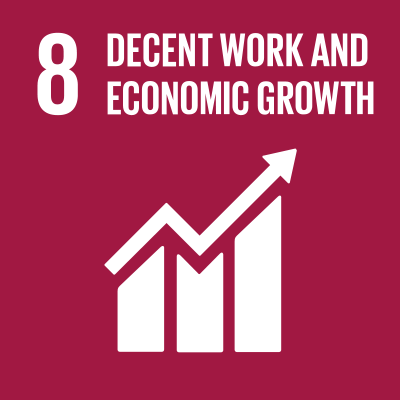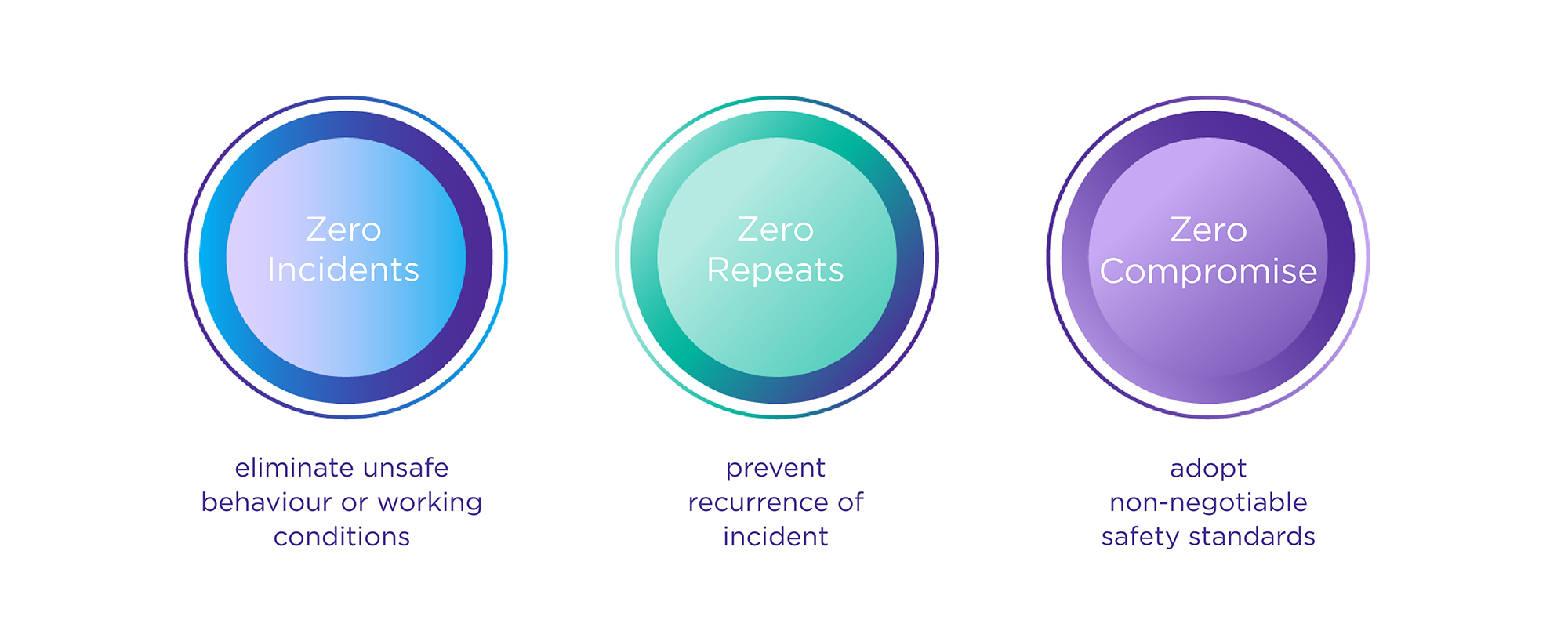Significance & Commitment

It is well-understood that shortcomings in Occupational Health and Safety (OHS) management can have serious adverse consequences, not only for the health and well-being of employees and their families but also for the Company’s reputation. Therefore, the Company has made a conscious commitment to creating a working environment in which all employees, including anyone who works for us, are guaranteed the safest possible workplace and work conditions.
Management Approach
The Company has established an Occupational Health and Safety (OHS) Policy and strives to active “3 Zeros” target. To achieve the target, the Company has introduced a safety culture, that has been developed on the ISO 45001 and industry best practices, covering the process for occupational health and safety management, safety competency enhancement, and safety awareness instillation. This management system is regularly reviewed to ensure its compliance with relevant laws and regulations.

The Sustainability Committee, which is chaired by the CEO, annually reviews all OHS policies, strategies, and annual targets. This committee is the highest governance body for OHS management. Furthermore, OHS performance is one of the KPIs of CEO and management across all business units.
Occupational Health and Safety Management
The Company regularly monitors the work environment following risk factors in each operational site, such as inspection of air quality, noise level, concentration of hazardous chemicals, and luminosity of the worksite, to ensure strict legal compliance. External assessment agencies carry out those measurements to ensure that all employees and contractors have a proper working environment without health-threatening hazards.
With respect to sites that may cause health and safety impact to workers, the Company organized health risk assessments and arranged for targeted health examinations based on those risk factors. This includes examinations on hearing and lung capacity, conducted by occupational health doctors. Differentiated occupational health examinations are conducted in each country. Employees’ health information is kept confidential. The Company also complies with the Personal Data Protection Act (PDPA) and has the policy to protect employees’ personal information to prevent disclosure without their consent
Hazard Identification, Risk Assessment, and Incidents Investigation and Reporting
The Company has a Hazard Identification and Risk Assessment process that covers all permanent and temporary employees, leveraging the following hazard identification tools that are adapted to each country. These include the Job Safety Environment Analysis (JSEA), the Green Card/Yellow Card system, the Safety Health Environment Accountability Program (SHEAP), and Hazard Identification, Risk Assessment and Determining Control (HIRADC) used in the mining business in Indonesia, the SLAMs (Stop, Look, Assess, and Manage) used in the mining business in Australia, and the Safety Walk Down program used in the thermal power business in China.
Following risk assessment, the Company has developed an OHS work plan to reduce and control risks to acceptable levels. This includes monitoring work plans, reviewing hazard identification, risk assessments, and identifying opportunities for improvements at least once a year or upon a material change in safety. The Company has identified a hierarchy of controls for safety, including developing communication and risk monitoring plans by managers who have the knowledge and capability to assess risks and communicate as appropriate to operators before start of work. Should hazard or safety risks be detected, workers have the right to refuse work or cease operation until the problem has been investigated and addressed. This will not be considered a disciplinary offence, and it is encouraged for workers to report observations of unsafe situations and practices.
In case of accidents during operation, employees or witnesses must report to liner supervisors to assess the situation’s severity and report it to concerned parties. For severe situations, the Company will convene a working team of experts to investigate and uncover the root cause of the situation. This will lead to the identification of preventive measures, including indication of future risks. Incident investigation reports, including corrective action approaches, will be routinely reported to monthly management meetings.
Engagement, Advisory, and Communication with Operators
The Company provides opportunities for employees at all levels to be involved on safety, starting from co-development and suggesting ideas and opinions through various channels, such as through the Safety Perception Survey, Safety Committee, Quarterly meetings, and various seminars. Suggestions will be analyzed and developed into safety improvement topics, leading to short- and long-term action plans. Additionally, the Company also communicates to raise awareness in preventing and reducing accidents or injuries resulting from work through various channels: e-mails, start-of-work meetings, business unit-level awareness-raising activities, and annual organizational strategy meetings, among others.
With respect to sub-contractors, the Company monitors sub-contractors with an emphasis on safety and is open to regularly receiving suggestions on safety. The Company also communicates safety news, including accident reports or safety knowledge exchanges. Additionally, the Company also opens to receiving safety suggestions from the community and communicates safety information to concerned parties, such as through visitors’ safety orientation.
Additionally, the Company has appointed Safety Committees, designated in each working area as per the legal requirements of each country. For instance, the safety committee in the Thai head office is composed of 50 percent worker representation, 50 percent employee representation and Safety Officer at professional level to foster collaboration on surveying unsafe working conditions, suggest safety improvement projects, and assess annual safety plans. The committee meets once monthly.
Knowledge and Skills Improvement
The Company facilitates the enhancement of OHS knowledge among operators by creating tailored curricula for each worker. A training program, led by specialized OHS experts will be organized annually both internal and external training.
For instance, OHS trainings are conducted with senior management in all countries, which include modules on the rules and regulations in each territory and specialized modules designed for top management in each business unit. Key differences in each country are as follows.
- Work hazard analysis system permitting work in work at height in China
- Vehicular safety: Lock-out, Tag-out system, handling of explosives in Indonesia
- Incident investigation and risk assessment in Australia
- Organization of morning Talk, an inter-unit meeting prior to start of work
With respect to contractors, the Company assesses contractors’ OHS knowledge and capabilities starting from its procurement process by considering curricula related risks related to nature of work. Contractors receive training by safety department concerned with relevant laws and regulations, including the Company’s policies and regulations. This is to ensure that all subcontractors have adequate understanding on OHS and are able to safely operate.
Health Promotion
The Company promotes health that is also not work-related among workers by organizing health examinations for new employees and annual health examinations for all employees. Employee health information is kept confidential as per the Personal Data Protection Act (PDPA). Employee information will not be used without consent. Additionally, the Company also regularly communicates health knowledge through email, and arranges for seasonal flu vaccines, including Covid-19 vaccines for employees in all countries and all workers who operate in Indonesian mines. The Company also has a Work from Home policy to reduce Covid-19 infection risks in every country. Additionally, the Company organizes health-promotion activities such as Safety Day in Thailand and Indonesia and promotes exercise in power plant site in China, among others.
Prevention and Reduction of Impact Related to Business Relationships
Acknowledging OHS risks that could impact business relationships, including with subcontractors, suppliers, customers, or the community, the Company established the following measures per business relationship type.
| Contractors | The Company developed Contractors’ Health, Safety, and Environment Management Standard by requiring all business unit to have a Contractor Management System that extends to sub-contractor selection, sub-contractor management, and annual sub-contractor performance evaluation. |
| Suppliers | The Company has a management system to control procurement, employment, manufacturing, and service processes. |
| Customers | The Company inspects the effectiveness of its boilers in customers’ power plants to provide customers with the highest efficiency, effectiveness, and safety. The Company also conducted customer satisfaction surveys in various fields, including safety. |
| Communities | The Company conducts Perception Surveys with communities potentially affected by business operations, including providing community grievance channels. |
Upon receipt of safety suggestions from business partners, the Company will correct, improve, and develop to ensure that occupational health and safety risks in operations are appropriately prevented.

